StarCraft 2: Heart of the Swarm Review
If media were superheroes, then the chief superpower of games would be ‘interactivity’, but a close second would be the mystical and otherwise untouched wonder that is ‘expansion’. Don’t get me wrong: you can always release a director’s cut of your film, or maybe rewrite sections of your best-selling novel, but true expansion of one completed work into a new independent entity is where games, even board games, are the real kings of the hill. Good expansion is more than just adding some new skins: it changes the nature of the game itself, takes apart the concepts that make up the original, shifts them around, and then puts them back together to form something just as great. Think of it like ripping apart a Ferrari and using the same pieces to build a Porsche (your call on whether this is an improvement). It’s a tricky task of balance that applies to every expansion: whether it’s new class updates for Team Fortress 2 or a new faction in Civilization 5. But hard as it may seem to believe, a truly great expansion should feel a little unbalanced. A great expansion gives each player some new toy that makes them jump up and down for joy.
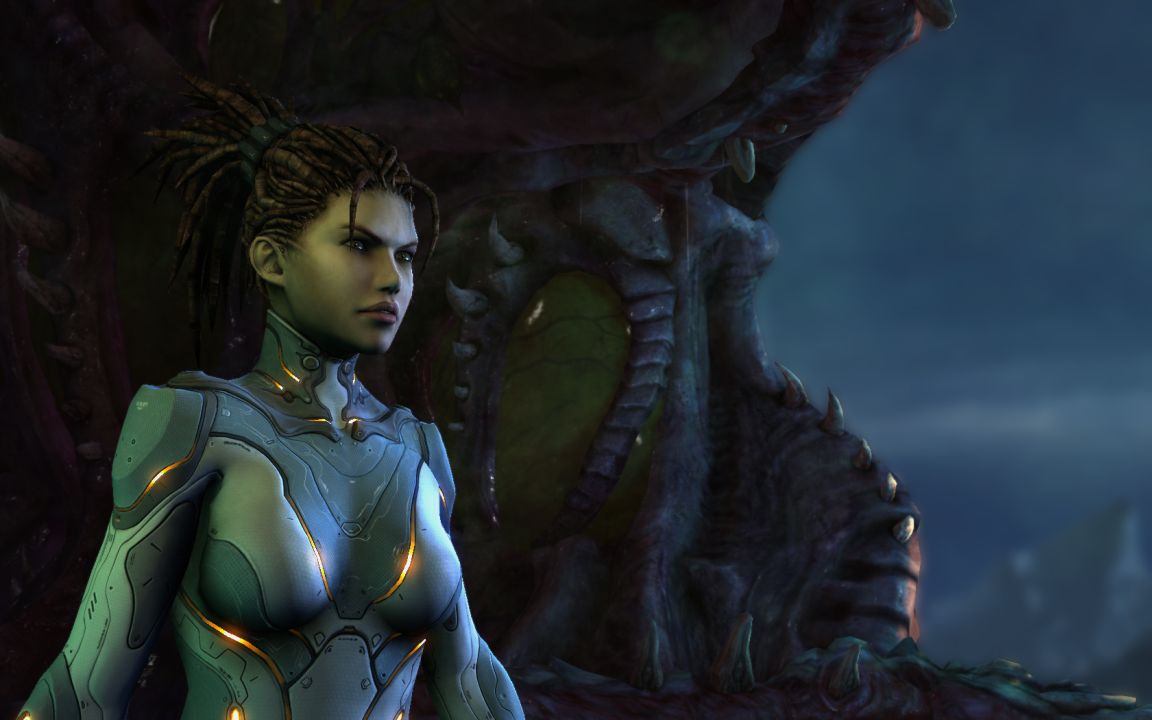
The StarCraft series has been exemplary in this area: the original StarCraft was a well-balanced game, but Brood War did the unthinkable and gave every race something blatantly unfair: Terrans got marine-boosting medics, Protoss got invisible high-damage assassins, and Zerg got cloaked splashers. Get out of town! While not being an expansion, StarCraft 2 followed in this grand tradition by seemingly giving each race a significant upgrade. Terrans combined medics with their dropships to get medivacs, Zerg finally got the ability to move underground, and Protoss’ new robotics bay toys seemed specifically designed for hosing siege tanks and zerglings. The result is that every race feels turned up to eleven – but as long as everybody is turned up to eleven, the game stays balanced overall. This is the secret of truly enticing expansionary gameplay. So, does Heart of the Swarm carry on? In a word, ‘Yes’. In three words, ‘Awww, heck yes!’
Each race’s additions feel not only well designed, but even just a touch overpowered. The Protoss gain a new spell caster in the form of the Mothership Core which comes onto the battlefield early and provides, like the Sentry, a host of useful non-damage spells. Real time strategy spells tend to fall so easily into simple area-based attacks that it’s a real pleasure to deal with a unit which is mostly devoted to positioning: the Mothership Core can recall all nearby units back to a nexus, or place a blocking Time Warp field that slows ground units. The Zerg also get a lovely new spellcaster in the Viper, which similarly has a unique approach to combat with its Abduct ability. Abduct pulls a single enemy unit toward the Viper. That’s all it does, and yet, this ability turns out to be incredibly useful, letting you drag away important pieces of your opponent’s forces straight into the loving arms of your waiting army.
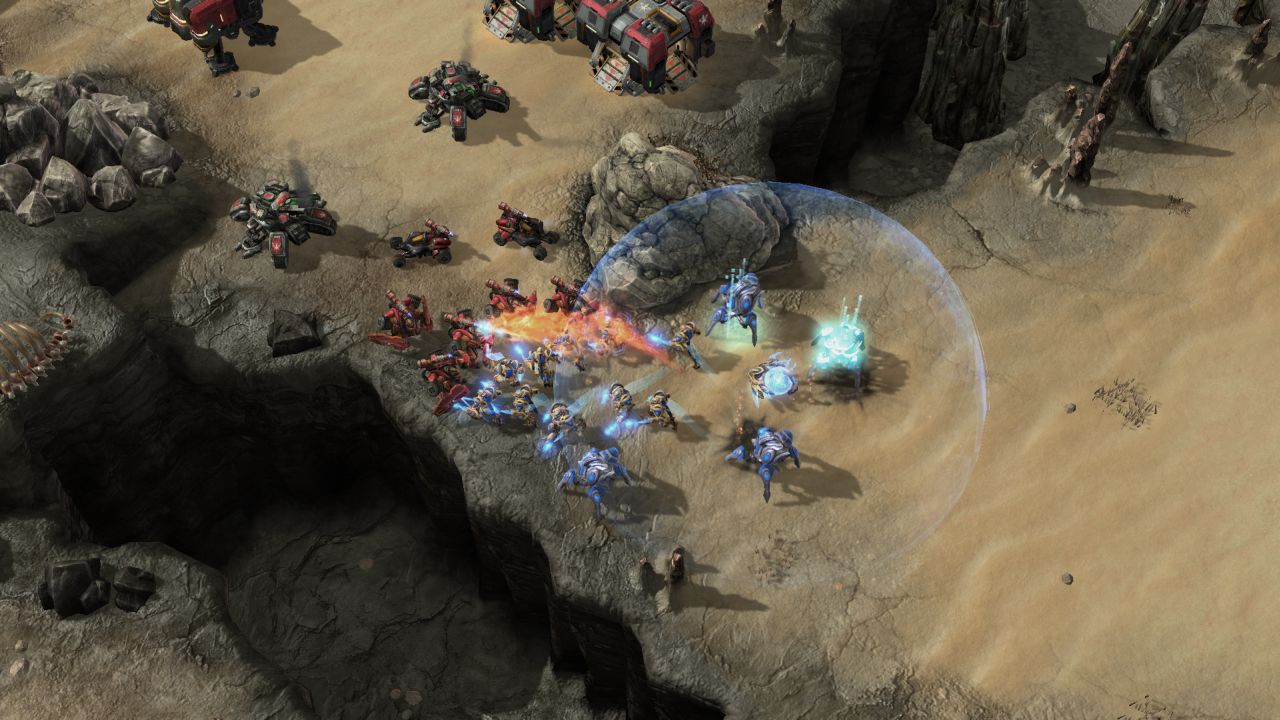
Possibly my favourite of the new additions is the Terran Widow Mine, Terran’s only burrowing unit, which fires off a splash-damage rocket at any approaching enemy and, joy of joys, resets itself after a short rest. It’s not uncommon for first-time widow mine defenders to take hit after hit to their army as they walk around the battlefield, wondering where those nasty rockets are coming from. This unit is incredibly annoying, and ‘annoying’ is precisely what we want our army to be. There are other additional units that fill in well-needed positions in their army, but these three in particular shine in their roles.
On top of this, Blizzard has simplified some of the upgrade routes for the older mechanics: Siege Tanks no longer require a separate research time for their special mode, and the same goes for the hallucination ability on Sentries. Zerg can now research burrow faster, and Reapers have finally found a use by receiving a health regeneration and faster movement speed. The result of all these changes is that each of the three iconic races in StarCraft has been given a fat and juicy Christmas present, and each can come to the battlefield smugly thinking that their new abilities will win them the day. This, more than anything else, is what makes Heart of the Swarm such a successful expansion, and a model for others to emulate. The multiplayer aspect is unquestionably the strongest part of the StarCraft series, and for good reason: Blizzard is known for releasing update after update, making heavy use of public test servers, and even designing whole mechanics and units which, if they don’t fit, don’t end up in the final game. This is what makes their product such high quality: a lesser studio would simply toss in the ill-fitting units and nerf whatever seemed too powerful.
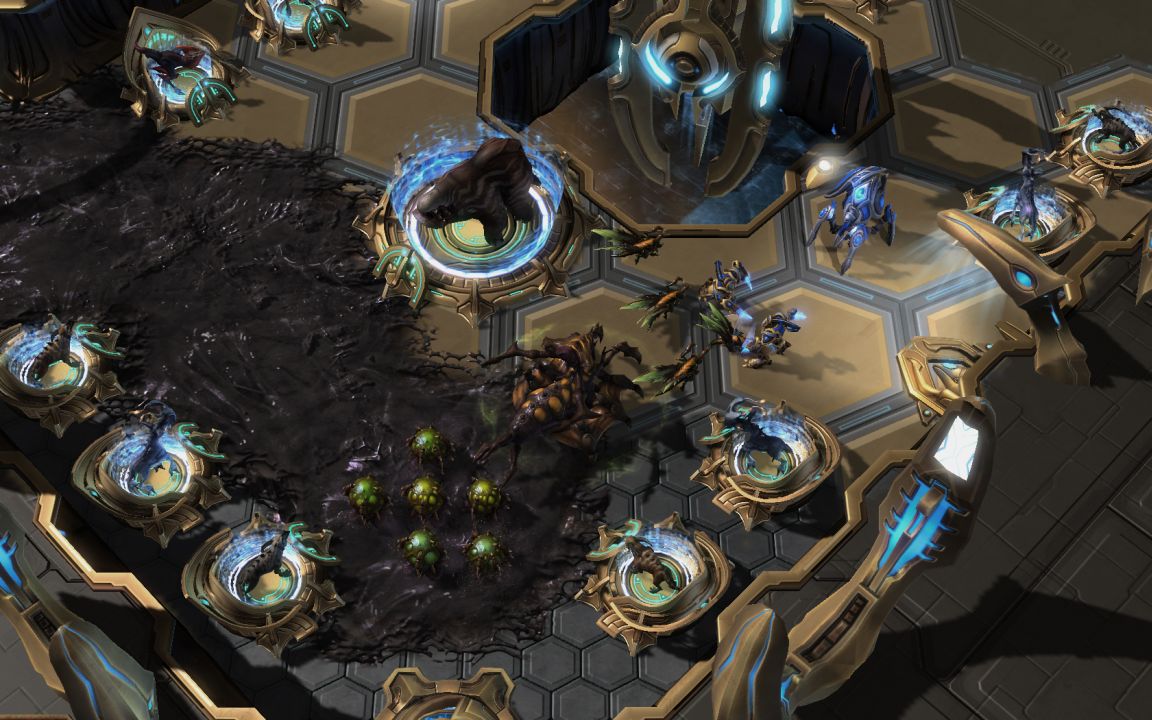
But what about the single player side of the expansion? Story wise, Heart of the Swarm picks up exactly where Wings of Liberty left off, now focusing around Sarah Kerrigan as the game’s main protagonist. While the game progresses, Kerrigan slowly builds up her own personal swarm, expanding her powers and abilities as she plots revenge against the evil emperor and long-time StarCraft bad guy Arcturus Mengsk. Heart of the Swarm follows cleanly and beautifully in the footsteps of Wings of Liberty as far as its excellent level design goes. Missions slowly ramp up in complexity, adding a single new unit in each level, and usually tailoring the challenges nicely so they show off the unit’s unique abilities. There was even a level whose main ‘ability’ was spawning creep, which might sound boring, but turns out to be an engaging and fun mechanic.
Rarely a level might feel a little too familiar, especially if it mirrors a good experience from Wings of Liberty but even these are very well crafted, and Blizzard more than makes up for this by slipping in some truly brilliant gameplay at times (particularly a fun and entertaining Terran ‘cameo mission’, which I won’t spoil here). As in Wings of Liberty, the game also allows special upgrades and unit variants not available in multiplayer. More importantly, since so many of the campaign’s levels focus around the use of Kerrigan as a hero unit, Kerrigan herself can be upgraded with delightful new powers and abilities. The one aspect of this which is a bit of a disappointment is that, for both the unit upgrades and the Kerrigan upgrades, all changes can be switched out or undone between levels. On paper this sounds like it gives the player more options to tinker with, and while that’s true, it also robs the choices of any meaning, and makes the game lose replay value. Still, there are also special unit variants which are irreversible, so Blizzard has wisely kept this philosophy from being taken too far.
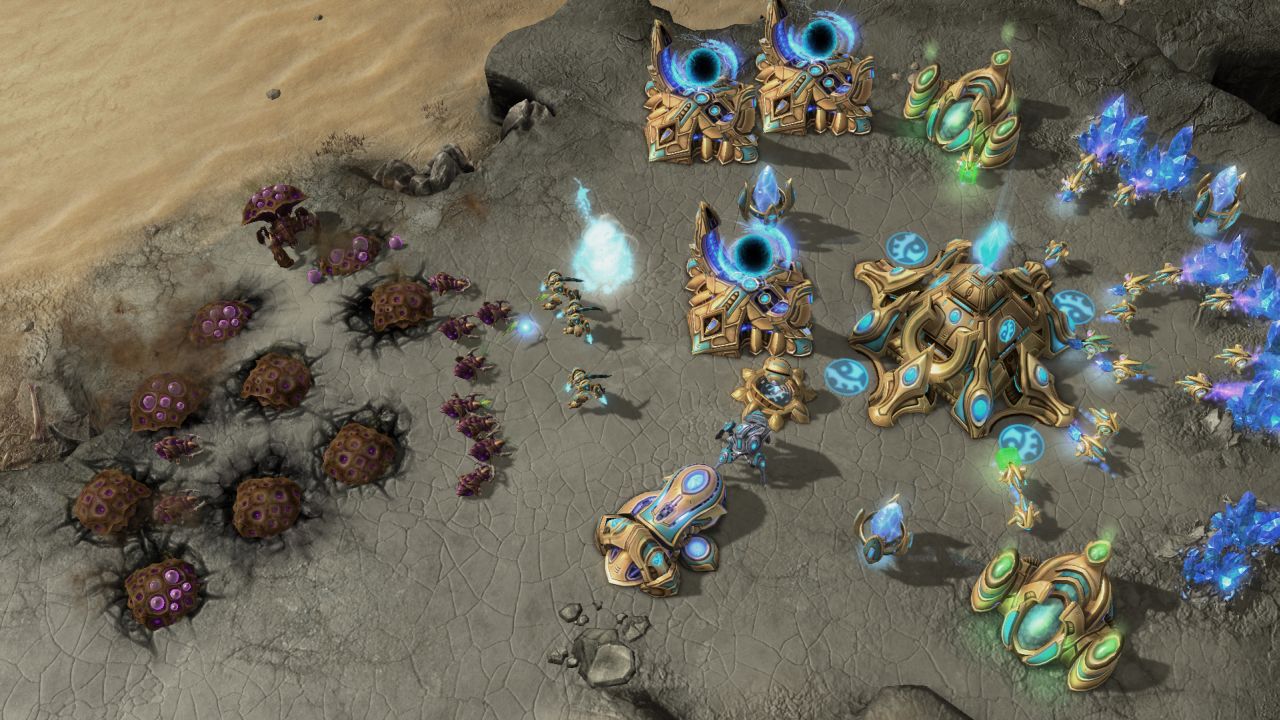
These unit variants are introduced via simplified ‘evolution missions’ where the player has a chance to make a single attack or two using the new unit abilities. These missions were a bit of a mixed bag: on the one hand, it’s a real pleasure to be able to try out a new ability before committing to it (and it’s a good idea to apply this specifically on the irreversible upgrades). On the other hand, at times the missions felt like a chore to get out of the way in order to enjoy the upgrade, as they pose no real challenge, and serve mostly as five minutes of basic training. An option to skip these missions might have been put to good use.
Most people don’t play Blizzard games for their storylines (or as I’ve heard it put, for their single shared storyline), but one area where the expansion does legitimately shine is in character design: I’m not talking about the visual style, although that also deserves praise. Rather, I mean the personalities themselves. Having a Zerg-centric storyline lets the player interact with the most varied and eccentric characters yet to make an appearance in a Blizzard game, with a wide range of motivations and eccentric worldviews. Of special note is Abathur, the hideous beyond-mad scientist whose soul purpose is repurpose; his one thought is to mix new genetic information into your Zerg swarm. It’s a true pleasure to see the game offer optional side conversations which (gasp!) develop these characters slightly as the game progresses, but for the most part, they serve simply as exposition givers or potential threats to the player. A particularly harsh example of the narrative deficiencies are in the main villains: in all three cases, the player is simply told through dialogue that these characters are evil. Period. The player never actually builds up an antagonism, and even the main apparent bad guy of Arcturus Mengsk still rides mostly on, believe it or not, his misdeeds from the first StarCraft game all those years ago. The irony here is that some of the minor enemies actually receive more development, making some missions or quest lines have more impetus than the entire expansion. While we expect the plot to be forced into serving the needs of the gameplay, the storyline in StarCraft 2 continues to be its weakest aspect, keeping fairly cliché and light.
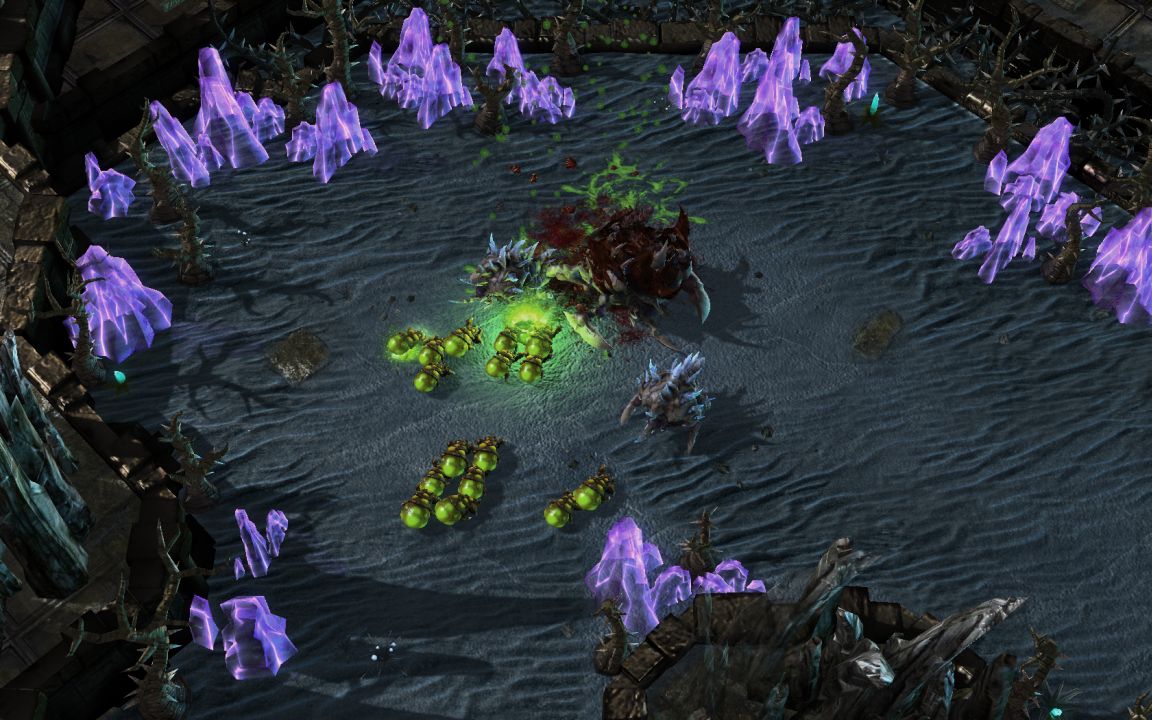
This situation stays the same even into the World-building in the StarCraft universe, which flatlines slightly in the narrative department. For example, StarCraft seems to have followed in the footsteps of more mediocre franchises by letting the ‘Ghost’ psionic capabilities turn into the good ol’ Star Wars Force that we know and love (telekinesis, ‘sensing’ emotions, you get the picture). Similarly, the Zerg’s organic mindset has been whitewashed a little to mimic more ‘magical’ thinking, absorbing brightly coloured essences and powers, rather than growing new DNA strands. Add in the Protoss’ new emphasis on mystical prophecies, and the whole thing feels very much like Warcraft In Space, but that might be more of a draw for some people than a disappointment. This is an important point: the old StarCraft is known for deliberately avoiding being ‘Warcraft In Space’ (as the annoyed Artanis character wisely points out, if you click him enough times), and while this certainly holds true for the gameplay elements, StarCraft’s storyline is not only firmly space fantasy, it’s reused space fantasy.
The same can be said for this expansion’s world building: all visuals are pushed to their Blizzardy extremes, with bright glowing eyes for most alien characters, and enormous shoulder pads for the humans (sound familiar?). But it’s hard to pick faults at these Blizzard trademarks, as the visual style is still stunning in its grandeur and beauty: Blizzard continues to be a company of artists, and this is something to be grateful for. Didier’s iconic touch is a blessing. On top of this, the continued use of live orchestra in the music department, with excellent reintroduction of classic themes and new music to drive the action, continues to be a quality turns Heart of the Swarm from good to great.
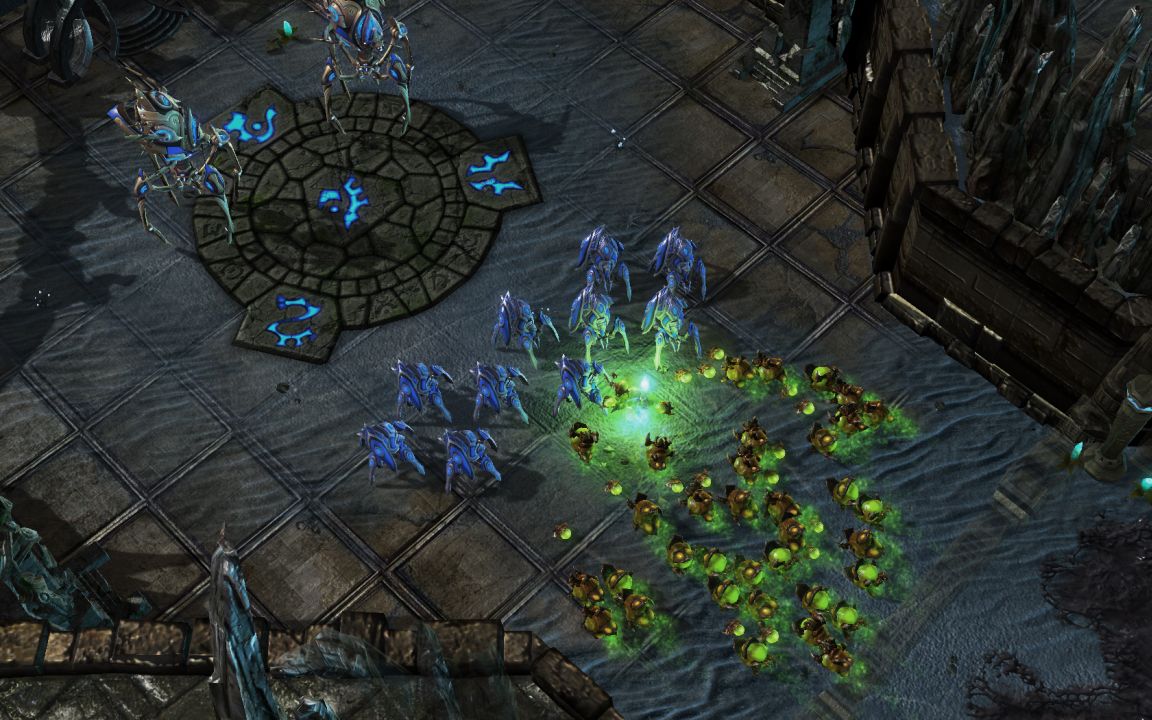
Heart of the Swarm is an expansion in every sense of the word. New units, new abilities, new story elements, new characters; even a new interface and new multiplayer battle system! Every single aspect of the game has been toyed with and given a variant, and the depth of the changes is truly surprising. A few quibbles about Blizzard’s particular form of storytelling simply aren’t enough to stop a wave of good things to say about this expansion. If you are playing Wings of Liberty, buy this expansion and rediscover the thrill. If you still aren’t playing StarCraft 2, what on earth are you waiting for?
